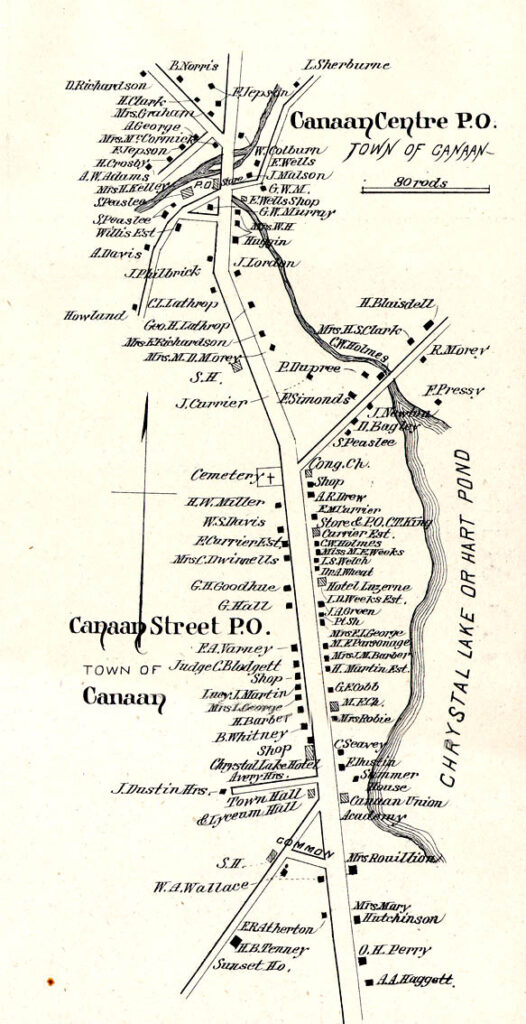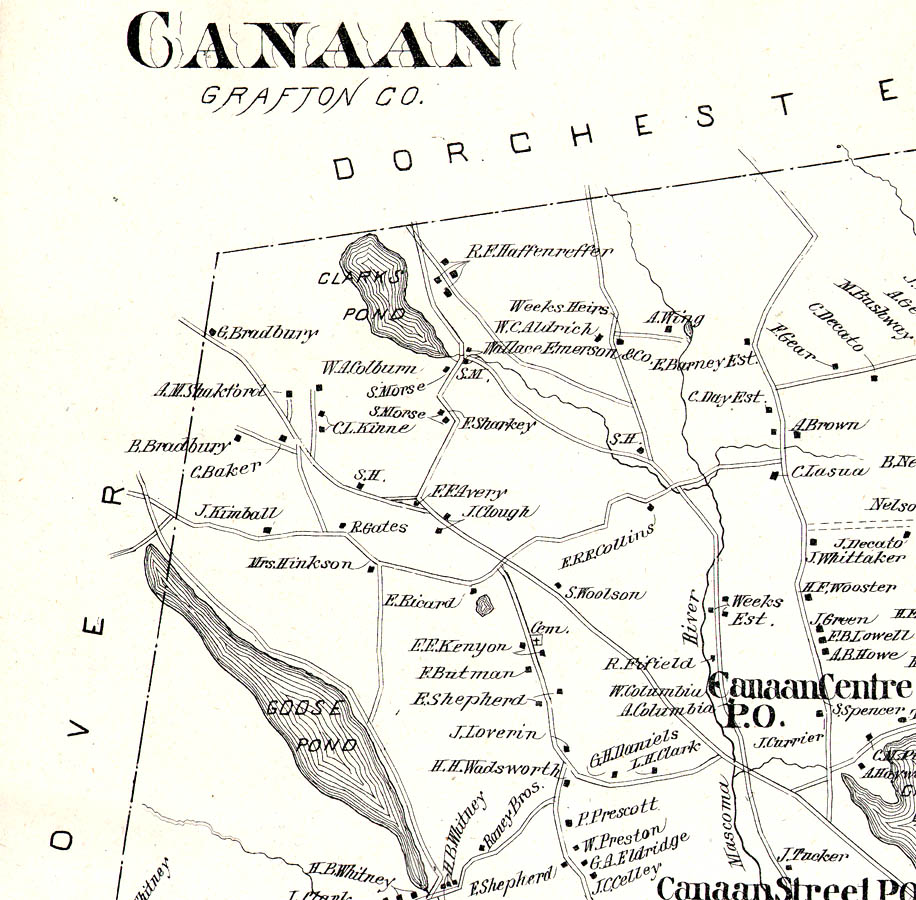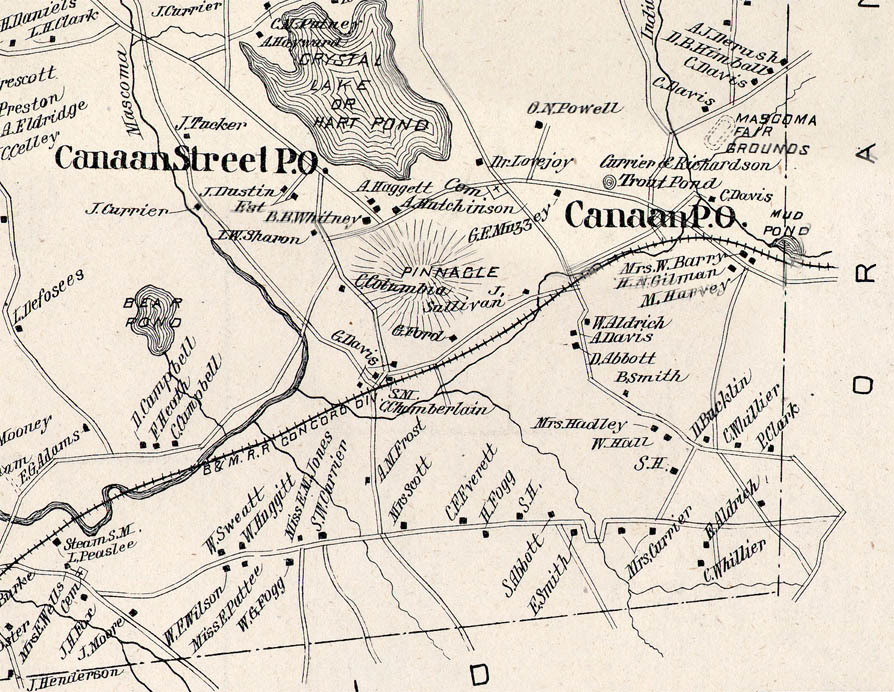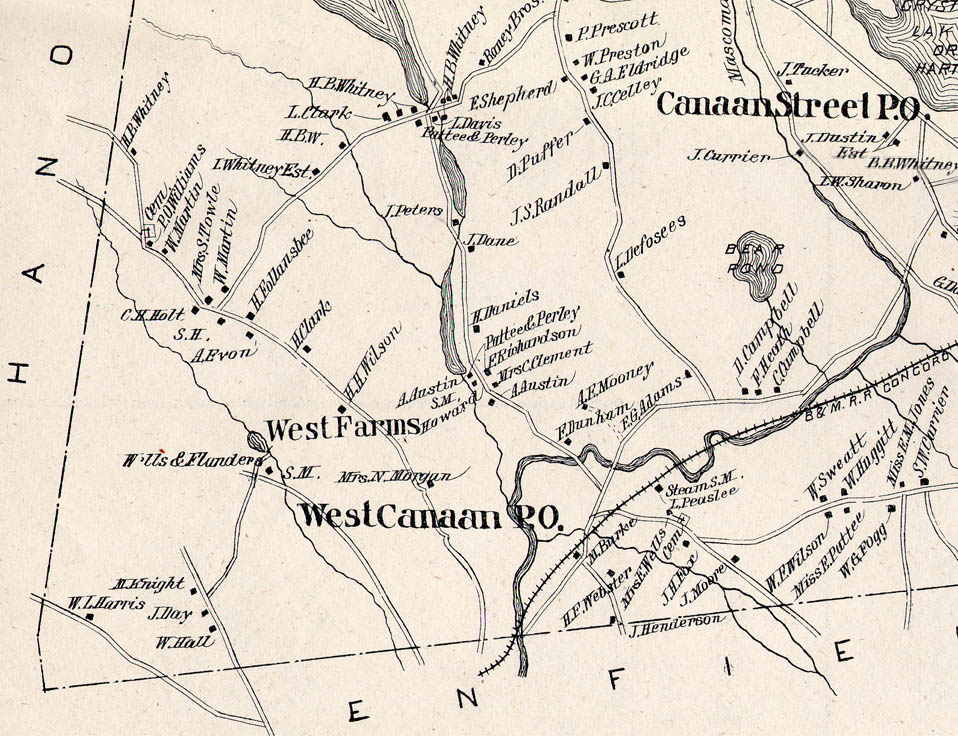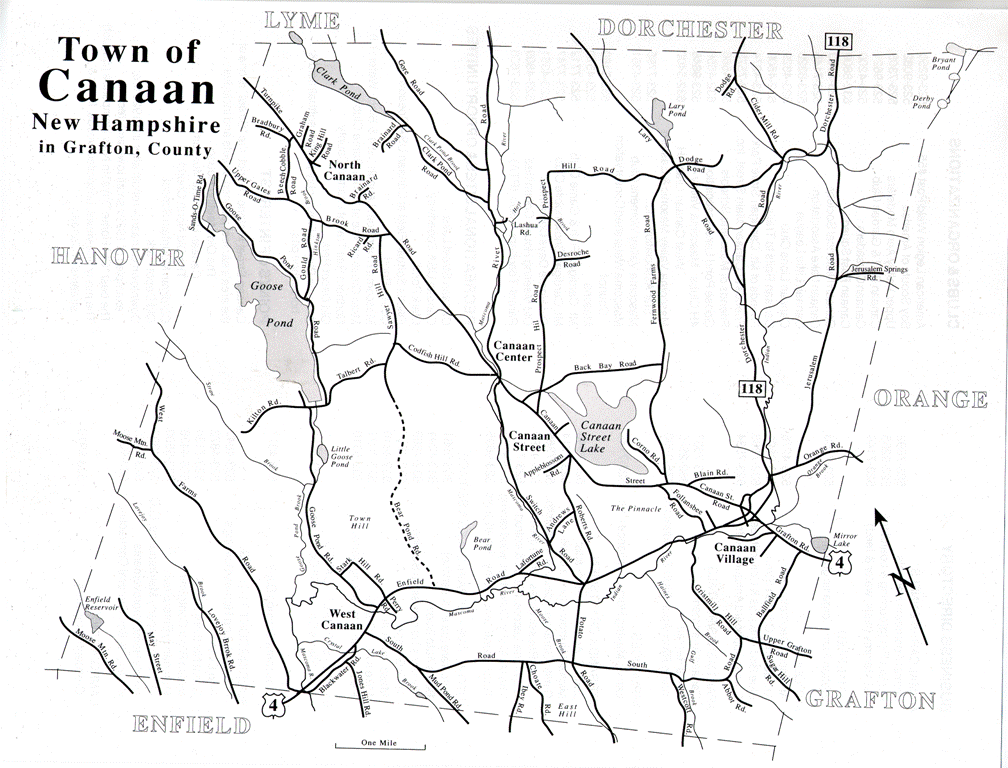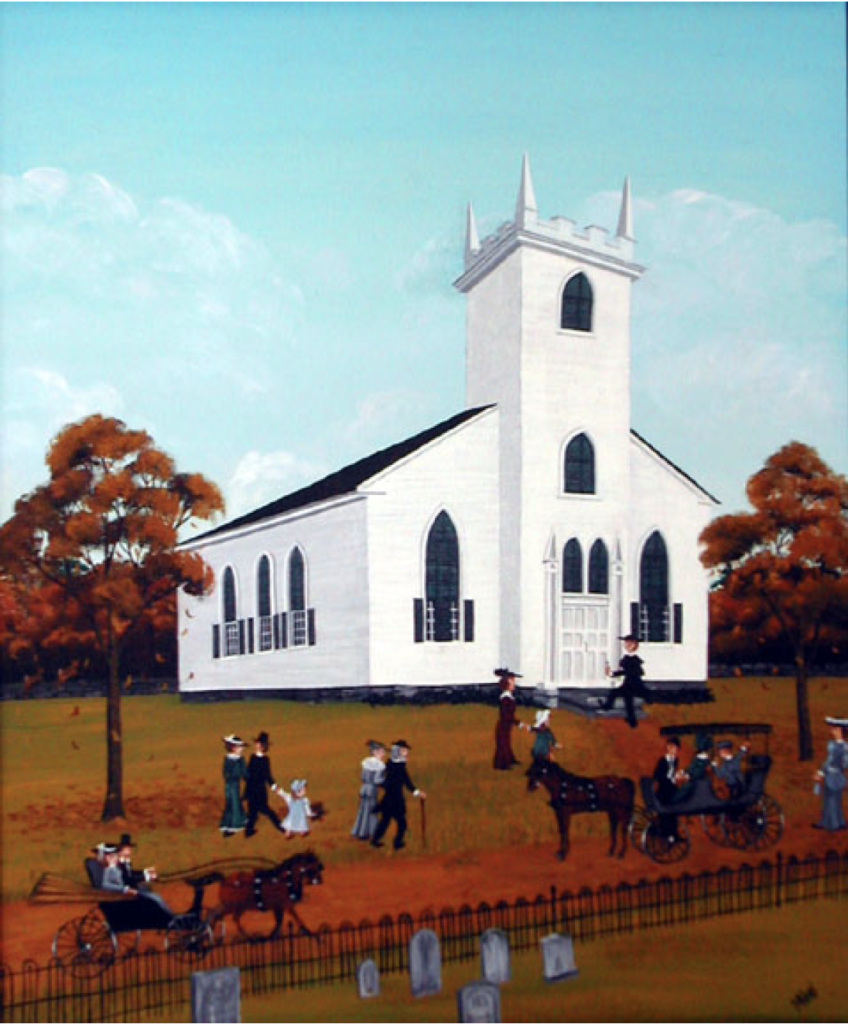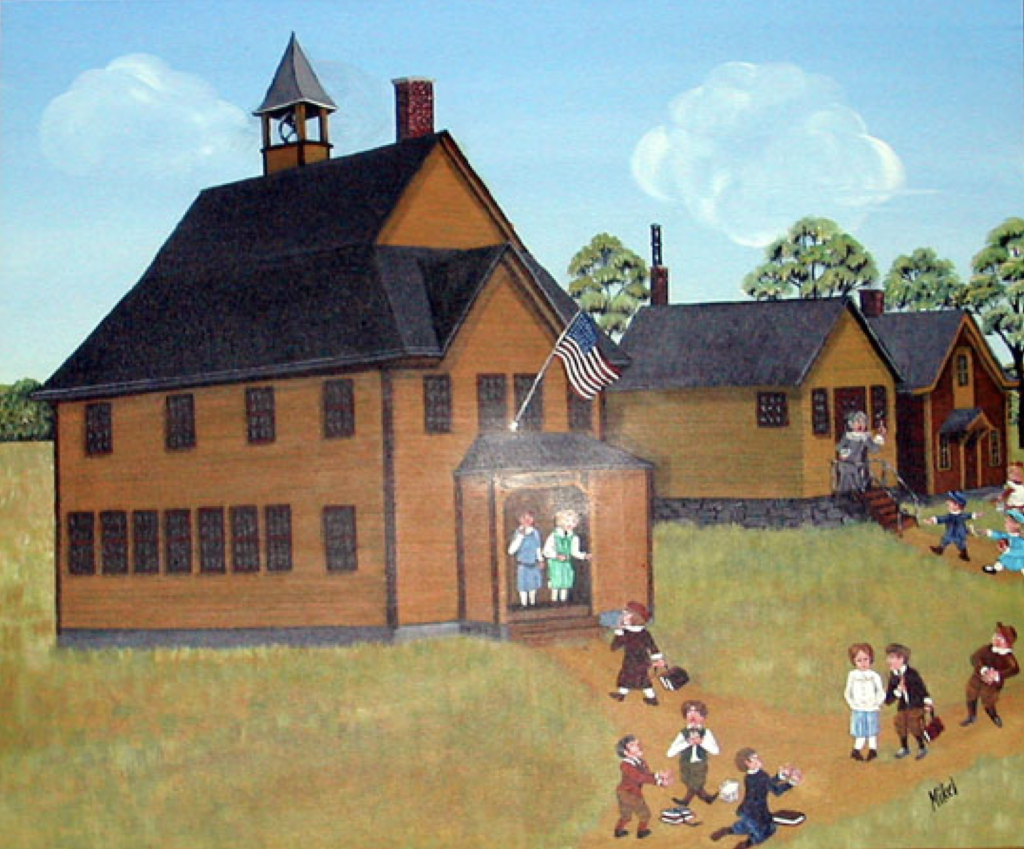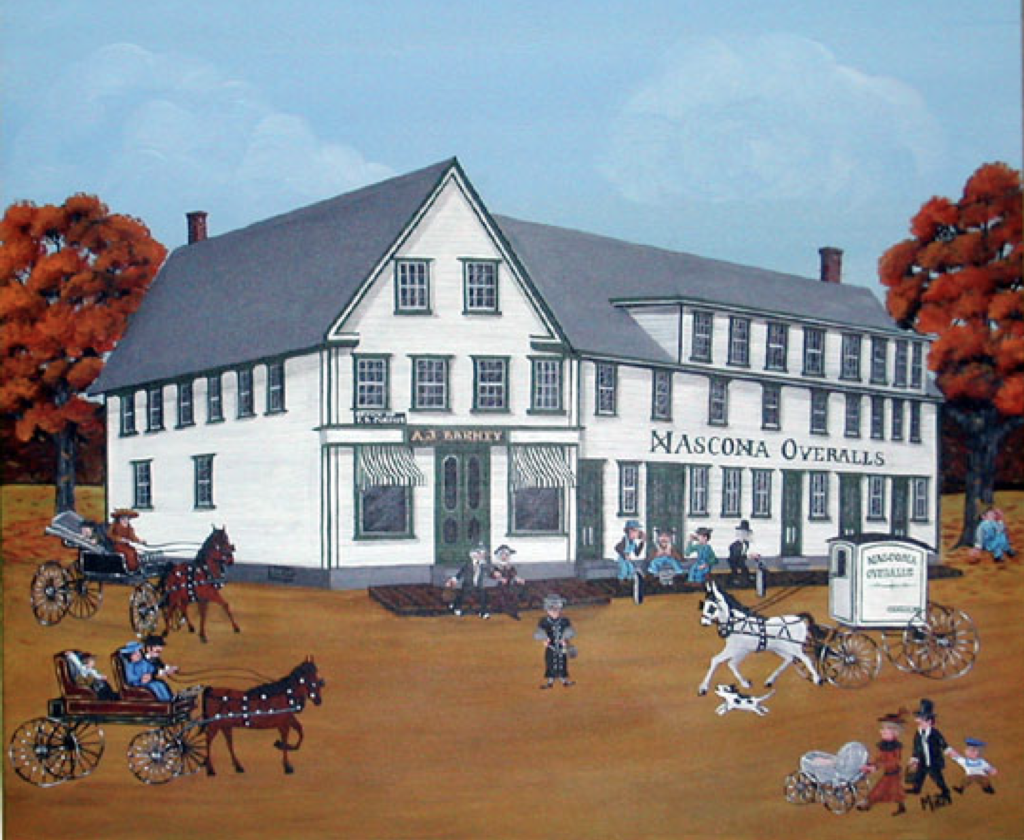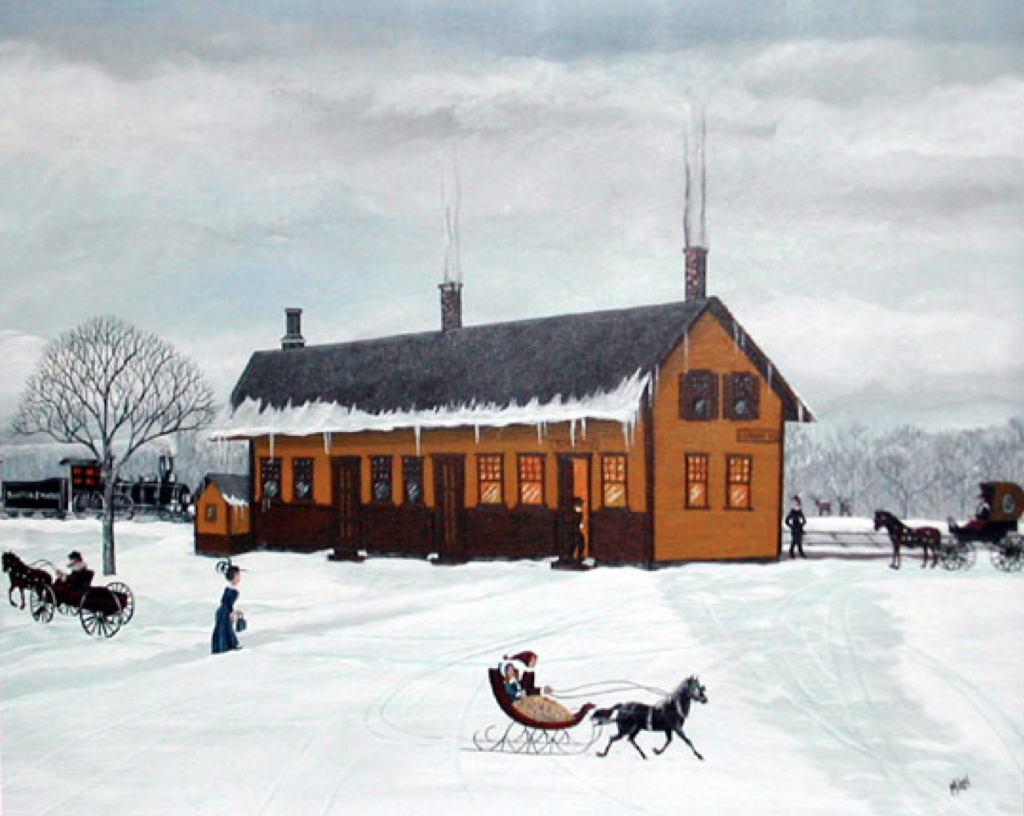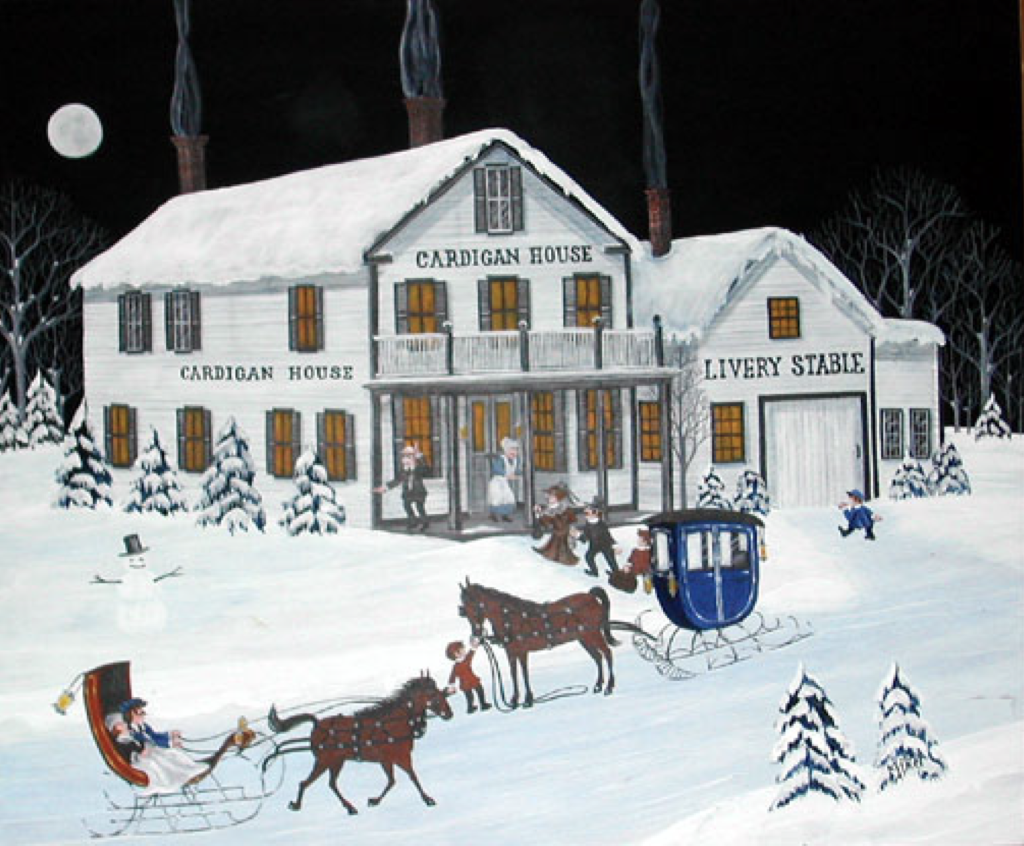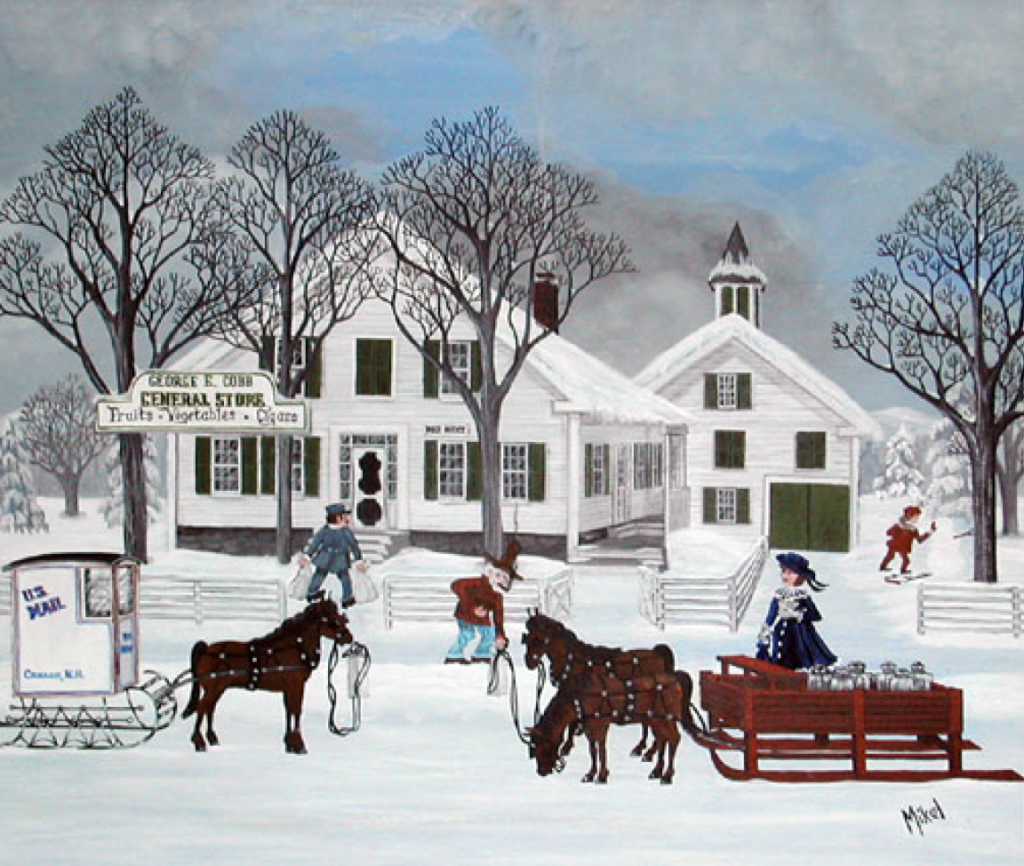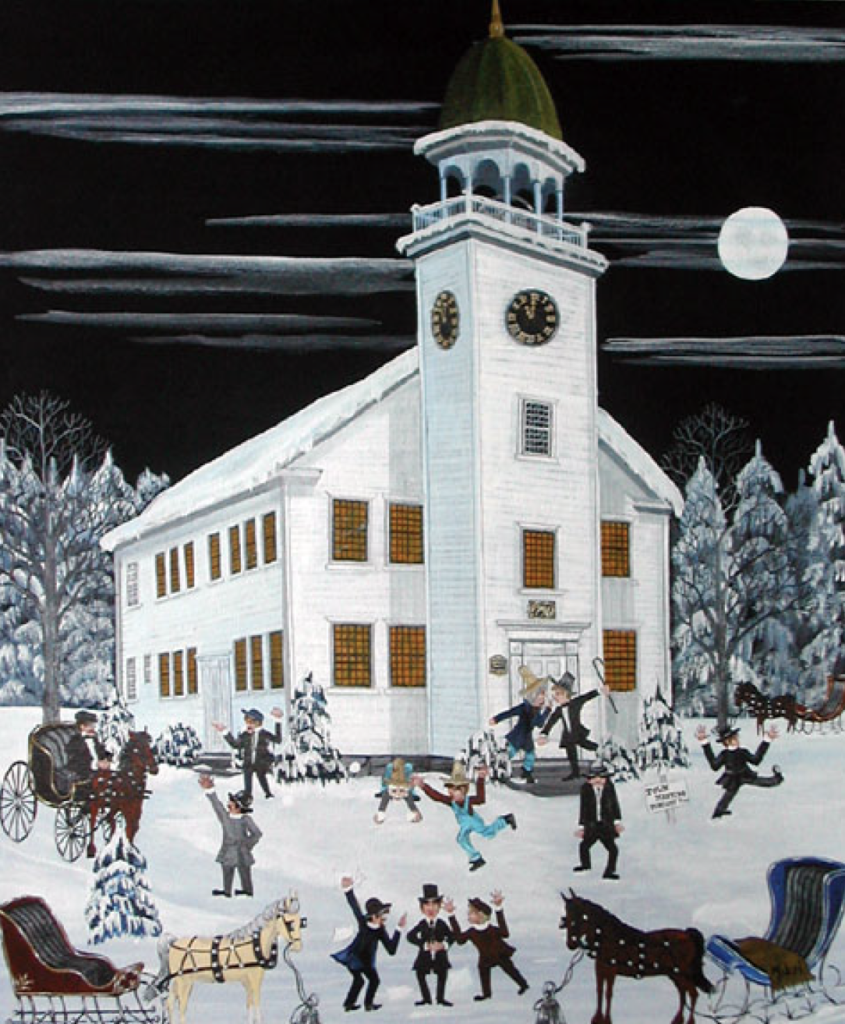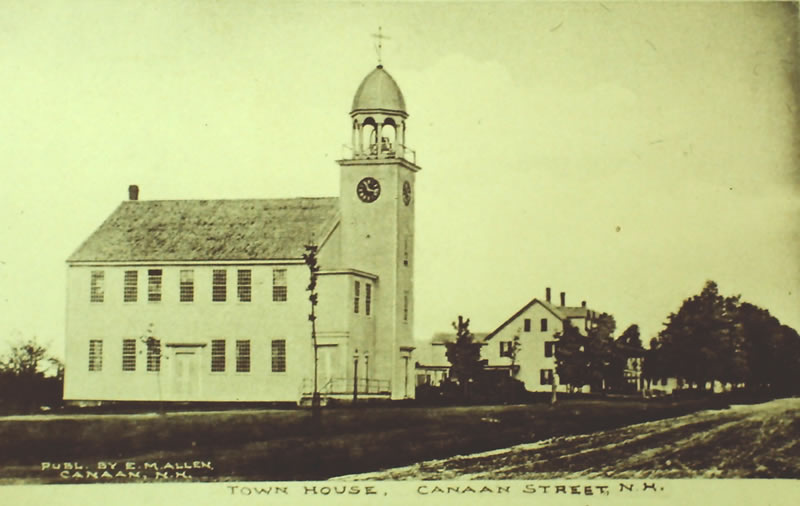
The Unique Heritage of Canaan
The Heritage of New England still plays a strong role in Canaan. We value our history, meeting places, old ways, and lessons from the past.
We learn the meaning of self-reliance and perseverance. We learn that we need to join together to accomplish great tasks. We will fight to overcome seemingly insurmountable obstacles. Education is a critical value for us as is the right of self-determination. We prize ingenuity and innovation while treasuring simplicity. Learning from our heritage helps us to embrace the future.
The Academy Building

It was the Canaan Planning Board that drew up the article establishing a Canaan Museum, which was adopted by the March 1961 Town Meeting.
The Museum originated on the second floor of the Academy building on Canaan Street. It opened Saturday, August 19, 1961 with an exhibit of pictures, antique furniture and other items of historical significance. During the Bicentennial weekend more than 30O people attended the opening.
Medora Nutter and Martha Stevens were Co-Chairman for the event. Others who were asked to be on the committee of curators were: Katherine Gordon, Pauline Barney, Constance Burbank, Margaret Eggleston, Karl Nyhus, Joseph Chandler, Col. Philip M. Whitney and Elsie G. Crocker. Elsie, a descendant of Canaan’s second settler, Thomas Miner, was the first president of the newly formed association.
Through the years many changes have taken place. After the library relocated to Canaan Village in 1978, the Museum moved to its present location in Academy Hall. The building was closed in 1979 and again in the mid-1980’s due to foundation work and other various repairs. When the organization celebrated its Grand Re-Opening, people gave freely of their family possessions to be displayed in the town’s museum.
As the Society’s collection increased, it became, necessary, to renovate the old kitchen and back room of the Museum building for the much-needed space. The kitchen was used for years by the Ladies Church Aid on Canaan Street to prepare meals for Town Meeting and numerous other events. This is now the Museum’s History Room. The walls are filled with pictures, articles and other tidbits of Canaan’s past.
The newly finished back room, which once housed a unique “three-holer”, now contains old School desks that predate the Civil War. They were used in this building when it was known as Canaan Union Academy.
The Museum also has the bells from the Canaan High and Canaan Center School, the bench from the Canaan Railroad station, the movie projectors, used in the Town Hall Theatre, a century-old accordion owned by Hiram Blaisdell and a display of science equipment purchased in the 1850s at a cost of $850.00. These are only a few of the articles that comprise the Historical Society’s outstanding collection of Canaan’s memorabilia.
The George Kimball House
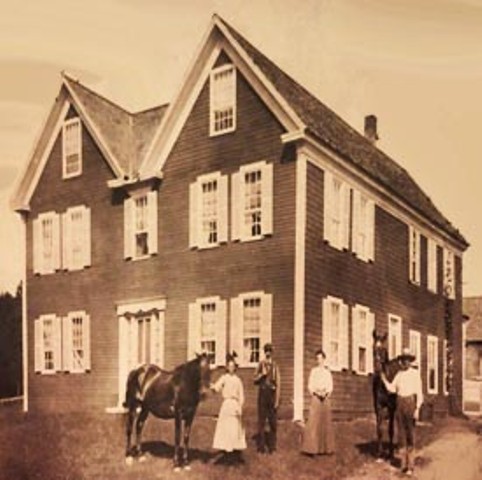
When Noyes Academy was established in Canaan in 1834, it was the first upper level, coed integrated school in the country. Imagine what life was like at the time, how blacks were treated, how they lived, what jobs and education were available to them. Think of parents who dared to send their young children from New York and other cities to lily-white New Hampshire, a strange place, at a strange time, and a huge risk for all.
The bravery of the parents was impressive. After a horrendous trip emphasizing their low social status, the students arrived in Canaan. There they found warm and caring people who believed in the education of blacks and whites. All students were treated the same. They enjoyed months of equality, both in the classroom and in the social environment.
Anti-abolitionists destroyed the school and the students were sent back to their homes, but the short time they had at Noyes Academy was seared in their memories and those memories sustained them. What they learned, academically and socially, led a number of the students to further advanced schooling and long careers of service.
Read about the people associated with Noyes Academy and the George Kimball House:
Incorporators and Trustees
Students
Instructors
Town Officials
Lawyers
Supporters
Opponents
George Kimball was a trustee of the academy and hosted the male students in his house during their stay at the school. His house is the remaining connection that we have to Noyes Academy and its illustrious students. The Historical Society hopes to save the George Kimball House to preserve the memory of the Academy’s students and incorporators.
You can also review the house plans. For additional information, contact CLTownsend@comcast.net.
Do you have a memory of Canaan Life you would be willing to share? Have a suggestion of someone we should record? Please contact the web administrator to be put in touch with a Canaan Museum Curator!
Lucerne Inn
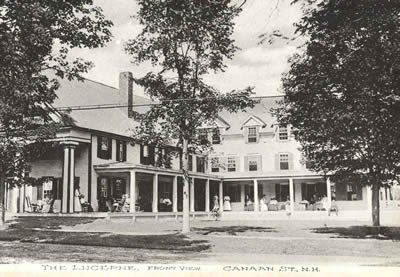
Built in 1798 and first known as Gilman’s Tavern (a colonial stagecoach tavern), the original building consisted of the main house with a barn creating an ell structure. But around 1890 this lovely was converted to the Lucerne Hotel. The Lucerne was owned by the Weeks family, and subsequently given to their adopted son, William Hinckley, who had a reputation of being a wonderful and accommodating host and proprietor. In 1908, Mr. Hinckley had the large barn moved to a nearby location where he continued to use it as a livery stable. In its place a new and extensive two-story ell was constructed which included a number of additional guest rooms, a kitchen, laundry, and bathrooms. With the expansion of the hotel and the fact that it was located on Canaan Street Lake (previously known as both Hart’s Lake and Crystal Lake), the Lucerne quickly became a popular summer hotel. Parties on the lawn, musical entertainment, swimming, hiking, croquet, tennis, and golf were just some of the ways you could spend your days there.
In the 1940s the home was converted to accommodate the Cardigan Mountain School (an all boys prep school which is now located just down the road). Later, from the mid 1960s to mid-1970s, it became the campus of a tiny liberal arts college called—appropriately—Canaan College. It was later bought by a family who has since used it as a primary residence.
The Old North Church
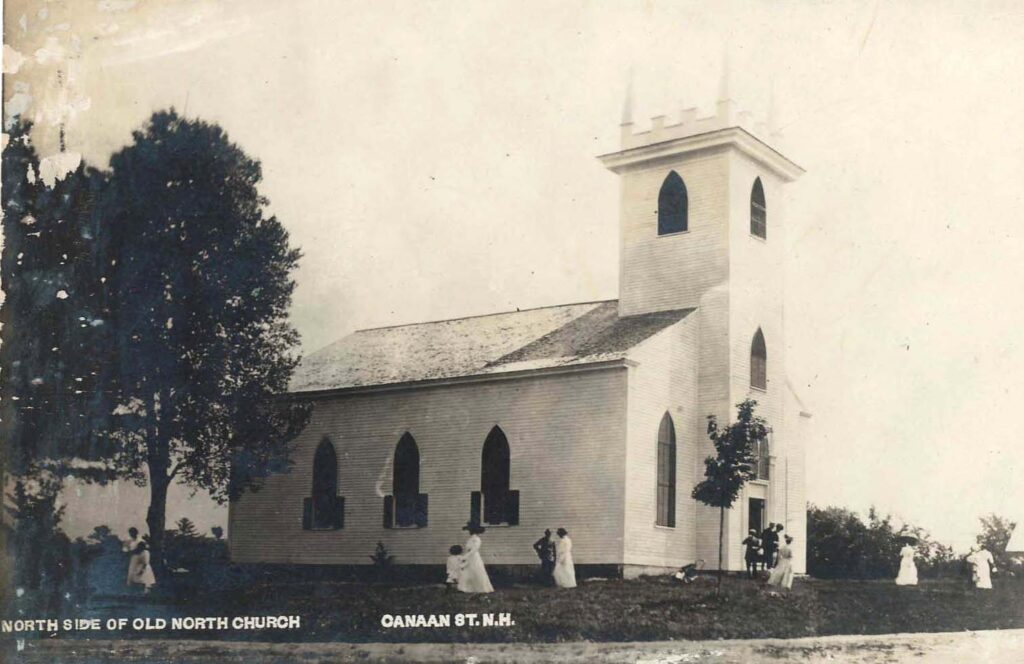
The Old North Church of Canaan
Link to pdf brochure of the Old North Church
Schools
Join the Canaan Historical Society
- History of Canaan by William Allen Wallace
- History & Photos of Canaan Old Home Days
- Meeting House
- Original Town Charter
- Canaan Historical Society Website
- Canaan, NH Town Records 1837-1862 (Part 1)*
- Canaan, NH Town Records 1837-1862 (Part 2)*
- Canaan, NH Town Records 1837-1862 (Part 3)*
- Canaan, NH Town Records 1858-1875 (Part 1)*
- Canaan, NH Town Records 1858-1875 (Part 2)*
- Canaan, NH Town Records 1858-1875 (Part 3)*
- Canaan, NH Selectmen’s Account Book 1787-1806 (Part 1)*
- Canaan, NH Selectmen’s Account Book 1787-1806 (Part 2A)*
- Canaan, NH Selectmen’s Account Book 1787-1806 (Part 2B)*
- Canaan, NH Selectmen’s Account Book 1787-1806 (Part 3)*
- Original Library Charter
- Storm Photo Archives
- Stepping Back in Time: A Photo Tour of Canaan, NH by Donna Zani-Dunkerton
- A Tour of Canaan a Century Ago by the Historical Society
*files are broken into sections for manageable file size only
Modern Day Maps
Detailed Insets
Historic Maps
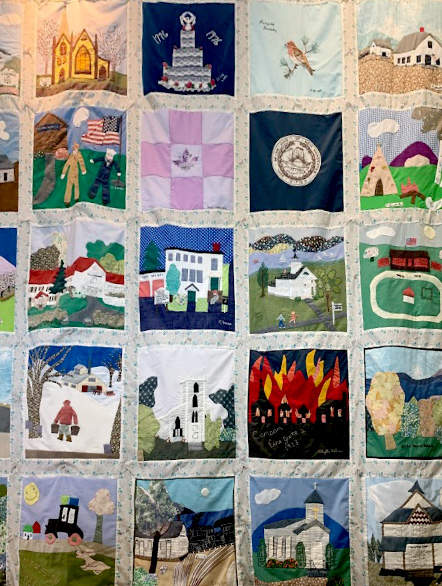
- On July 9, 1761 His Excellency Benning Wentworth first issued the first charter for the Town of Canaan. Legend has it that the first settlers, John Scofield, his wife and four children, made it their home in December 1766.
- Arthur Walworth has contributed excerpts from the diaries of his great-grandfather, James J. Walworth, who was born on South Road in Canaan in 1809. His great-grandfather lived in Canaan for the first 20 years of his life and we have the J. J. Walworth diary entries for the last year before he moved to Boston in 1829.
- The Canaan Union Academy was established after the closing of Noyes Academy. The Catalogue for the 1839 school year lists many names familiar from Noyes Academy. The school closed after several years and was reopened in 1853, after “enlarging and refitting the Academy Building”. The 1853 Canaan Union Academy Catalogue lists 65 male and 45 female students.
- The Gazetteer of Grafton County, N. H. was published in 1886. It was one of many county gazetteers that were published in the period and like most, it contains historical descriptions of each town.The Canaan chapter includes descriptions of businesses and some genealogy as well as town history. A town map is included and some of the residences are keyed to it.
- The New Hampshire Patriot published an article The Canaan And Cardigan. A Delightful Resort and a Grand Old Mountain, on July 15, 1886. The delightful resort that it describes is the newly opened Jerusalem Spring House and the grand old mountain is, of course, Mount Cardigan.
- Despite some historical inaccuracies, A New England Hill Town — 1800–1850, by Amos Noyes Currier, provides an interesting sketch of life in Canaan during the first half of the 19th century. It was written in 1895.
- The book length History of Canaan, N. H. is a wonderful telling of the history of the town and its people, published in 1910 by William Allen Wallace. Reprints are available in hardcover from the Canaan Historical Society. Buy a copy and enjoy the heft of a good book to read as you sit by the fire. To order a copy, call Donna Zani-Dunkerton, the Society’s Historian and Corresponding Secretary, at (603) 523-7960. A scanned copy of most of the History of Canaan, N. H. is available online. It can be seen at History of Canaan
- Historian Ned Smith prepared Canaan Bicentennial 1761 – 1961 for the Town’s 200th anniversary. This wonderful resource adds information about the terrible train accident in September 1907, the fire that destroyed most of Canaan Village in June 1923, the hurricane of September 1938, as well as recapturing the years described in Wallace’s History. This is a large pdf file which may take a while to download.
- Insight Magazine published a nice short History of Canaan in its Spring 1983 issue. It was written by Margo Moran (now Margo Taussig Pinkerton), a descendant of one of the town’s earliest settlers and a town resident at the time. She now lives in North Carolina but returns to the home of her ancestors several times a year. She teaches photo workshops here and overseas under the name Barefoot Contessa Photo Adventures.
- The area that is now downtown Canaan was developed as Canaan Village when the railroad came through town in 1847.
- See Photographs of The Canaan Train Wreck, The Canaan Village Fire, The Great Hurricane, The Flood after the Hurricane during the last century.
- Canaan has many discontinued roads, that the Town voted to make subject to gates and bars in the early and mid 1900’s.
- A graph of Canaan population records shows our population history.
- Postcards
Paintings
Canaan Reporter
Stories and photos collected by Donna Zani Dunkerton, Canaan Town Historian
- Train Wreck in West Canaan
The Canaan Reporter, September 20, 1907 - Canaan’s Drug Store Grand Opening
The Canaan Reporter, August 6, 1909

